Driving question to start the new school year for my grade 1 studentsWe've started up the new school year here at the Nanjing International School in China. Over the summer vacation, I devoted some time to reading, reflecting, and thinking about new ideas to implement in my physical education program. I'll be blogging regularly about these ideas throughout the year and am quite excited to try them out. My ultimate goal is to increase engagement and to enhance the learning of my students in physical education. I'd like to share an activity I did with my grade 1 students yesterday. 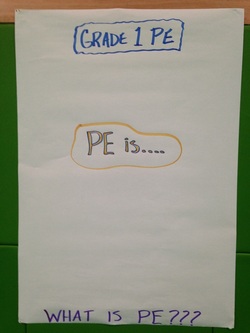 What is PE? I do not teach kindergarten PE, so all of the students I have in grade 1 this school year are new to me. As an initial starting point, I wanted to tap into their prior knowledge about what PE is, so created a visual with this driving question, "What is PE?". Short and sweet in nature. At the start of the class, we had a bit of a run around, then I threw the question out to them. I asked them to do a 'walk & talk' to discuss their answers to the question. With some lively music playing in the background they set off walking and talking (most of them!!) and after three minutes, I had them gather back in front of the visual to share their answers. The little ones never cease to amaze me with their insight. My plan is to use their answers to this driving question to help in creating essential agreements in PE. By getting the students to understand what PE is, we can then narrow the focus to what expectations are in PE. My next step will be to use the visual to have a discussion about important rules and expectations for the year, our class essential agreements. Have a look at all of their wonderful answers below. The ideas that you see in the visual are a combined effort from the two grade 1 classes that I have this year. I'm looking forward to the next step in the process of creating essential agreements. I believe that including their initial voice in answering the question, "What is PE?" will help them feel more ownership in the process of creating our grade 1 essential agreements for the 2014-2015 school year. I plan on using a similar process for all of my classes from grades 1-5 and will be blogging and sharing their ideas over the next week. How do you create your essential agreements in PE? Would love you to share in the comment area below.
4 Comments
Are we sometimes our own worst enemy?While on Twitter this morning checking out the latest chats and tweets, I came across a great cartoon posted by Lisa Duty that sums up exactly how innovation can be perceived by others. Although the cartoon below made me chuckle straight away, there is an unfortunate truth to it. Firstly, the person who is speaking in the cartoon is no doubt a boss, manager, or supervisor and he is speaking to a subordinate. This subordinate obviously has a great idea, something new and innovative that he would like to try out. The boss recognizes that it may be innovative but squashes any chance of this idea being put into action. Have you ever experienced anything like this in the work you do?
The second angle I'd like you to consider and the main point of this blog post is to get you to think about to what extent you represent both people in the picture. As an educator, we teach in certain ways and have created a number of routines that dictate how we deliver our lessons, units, and assessment. However, can we be our own worst enemy at times? Is there a voice sometimes within us that shoots down our potential to create positive change in our teaching practice? Do we sometimes come across innovative and creative ideas that sound amazing to us, but have a default setting that pops up and says, "Although this idea sounds great and I love it, it's just not possible for me and my teaching?". I choose to believe that all educators have only the greatest of intentions for their students. They want to create the very best learning experiences and environment for their students in order to help them succeed. I get all this. However, I still think that we can be our own worst enemy at times and stifle our own potential to become even better at what we do. The purpose of this blog post is to make you think about the little voice inside of your head and assess the quality of comments it makes to you when you strive to better your practice. If it's ever saying things that prevent you from keeping your mind open and receptive to new and innovative ideas in education, you need to stomp all over it. Squash it and don't allow it to speak. Doing so will ensure that you not only remain open to these innovative ideas, but try them out more and more in your teaching. Any thoughts? Comment below! Thanks. I feel truly honored to have been invited to be a keynote speaker at the 2015 National PE Institute in North Carolina. Social media has played such a significant role in helping me connect to greatness and to constantly refine and better my teaching practice. Documenting my own journey in teaching and learning has really helped me to better think my way through how I teach. Knowing that others find value in my work only motivates me further to continue to improve my practice. If you are reading this and planning on attending next year's conference at the University of North Carolina Asheville, I very much look forward to meeting you in person.
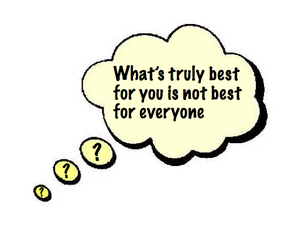 What does best practice mean to you and your teaching? It is a fact that more and more educators are jumping aboard the social media train in order to grow professionally, to share, and to learn from others. With one quick look, you can find countless tweets from educators who are overwhelmed by just how powerful Twitter has been in helping to deepen their teaching practice. As the base of educators on Twitter continues to rapidly increase, so too will the amount of resources, assessment tools, technology tips, class management ideas, teaching strategies etc. It is a difficult process to sift through all of the valuable information being shared in an effort to narrow down what best applies specifically to your own professional growth needs. It is imperative to remember that nobody knows you better than you yourself! You are the one that best knows: Through constant assessment of these pivotal areas of your teaching, you will find that your unique professional growth needs will reveal themselves over time. Once you are very aware of what these growth needs are, it becomes much easier to create and implement the most effective plan of action to deepen your practice. At this point, Twitter becomes much easier to navigate as you know exactly what you are looking for. Instead of being bombarded with a massive influx of information, you can become much more selective. Doing it this way allows you to find those hidden gems in the rough that help to specifically meet your own unique needs as an educator.
As Seth Godin says in his super short (great!) read “The Dip”. “What’s best is subjective. I get to decide, not you. It’s my definition, not yours. It’s the world I define, based upon my convenience or my preferences....” I use this quote above because it best conveys the point I'm making that you ultimately define what is important to you as a person and an educator. You are the master of your own teaching and learning. And as I said, nobody knows you better than you yourself. Time is a valuable commodity to all of us, so define what your most pressing professional growth needs are and move outward from there, connecting with those educators who inspire you and help you to truly deepen your practice based upon the unique growth needs that you have. And, don't forget about sharing all the amazing things that you are doing. There are educators out there who will find your work valuable. The very best of luck to you on this rewarding journey!! How can learning be made more meaningful?I have blogged a couple of times this week about Gladwell’s book Outliers. The book continues to keep me thinking about my own practice, how I plan and assess, and the different ways that I deliver my curriculum to the students that I teach. While running today, I was once again listening to the audiobook version of Outliers. The part that resonated the most with me today was about what makes our jobs meaningful. In Gladwell’s opinion, to feel truly fulfilled with our work, 3 specific criteria must be met. Although Gladwell was referring to success in the workplace, when we really look at the criteria list above and ask ourselves what makes learning meaningful for our students, wouldn’t the same key criteria stand out as being critically important? Students want to feel a sense of ownership over their learning and decision making (at least most do). They also need to be challenged, to feel that what they are required to do isn’t easy nor is it overwhelmingly difficult. The learning must be complex for them to feel engaged. Lastly, they need to know that the hard work they put in is well worth the effort and they can see the connection between the effort and the reward.
This is made even more powerful when the reward itself is more intrinsic in nature rather than extrinsic. Although extrinsic rewards work to motivate our students to try hard, its been proven in numerous studies that it only works in certain situations. For students to find long term satisfaction in school and in the process of learning, we must get them to find intrinsic value in putting in the time and effort needed for success. Success is a relative term here though because what success looks like is so vastly different between our learners. As Gladwell states, teaching is a meaningful job, so the 3 criteria from above are a great reminder to all of us to make the learning of our students as meaningful as possible. For those teachers from the northern hemisphere just about to begin a new school year, it’s perfect food for thought. For those teachers halfway through their school year in the southern hemisphere, keep working hard to meaningfully engage your students. What a simple brick and blanket can teach us about our practiceI’ve thoroughly enjoyed digging back into Gladwell’s Outliers book over the past week. Even though I had previously read the book, I have been listening to the audiobook version this time around and thinking more deeply about some of the big ideas that Gladwell presents. As Gladwell’s work has been a focus of mine over the past week, I’d like to share more thoughts that have resonated with me. In one part of the book, Gladwell discusses intelligence testing, in particular the work of Lewis Terman, a pioneer in educational psychology in the early 20th century. Gladwell writes in depth about Terman’s work regarding longitudinal studies he had done on children with high IQs. Terman believed that these genius children would go on to do extraordinary things in the world and should be groomed to do so. While a good majority of these child prodigies went on to do impressive things later in life, many didn’t and Gladwell surmised that there was a missing element within these people that prevented them from achieving the success that Terman thought they would undoubtably achieve. To illustrate his point, Gladwell discusses a totally different type of test that doesn’t measure IQ, but something else instead. A divergence test requires people to use their imaginations and to let their minds go in as many different directions as possible. To some schools and businesses divergence testing now holds just as much weight as intelligence testing because it helps to provide a more complete assessment of a person’s abilities and aptitudes. Gladwell provides an example of one particular divergence test. The test simply states, how many different uses can you think of for a brick and a blanket. It’s called a ‘Use of Objects’ test. Anyone taking a divergence test is given a specific amount of time to come up with as many different and unique answers as possible. It’s not as easy as it sounds and requires a total shift in thinking. Gladwell provides example answers of 2 different students who took the brick and blanket test administered by Liam Hudson at a prestigious British high school in the UK. Student A is probably a good student, but not considered to be a genius in any way while student B is a prodigy with one of the highest IQs in the school. Student A provided a clever, unique and very creative list of possible uses of a brick and a blanket whereas student B struggled and came up with only the obvious.
I’m using the divergence test example from Gladwell’s book to really get you thinking about how you approach delivering your own curriculum. As we plan the lessons and units that we teach in PE and other subjects, we really need to take the brick and blanket ‘use of objects test’ approach. We need to think, without limits, from multiple perspectives and viewpoints in order to open our minds and tap into all of the learning possibilities that exist for our students. This is one of the very favorite parts of my planning process. Even though some of the ideas I come up with could never take shape, once I go through the process of planning in this manner, the impossible always morphs into something that is possible. My best teaching moments have been a result of taking this approach to planning my lessons and units in PE. At times, I think that teachers can become too rigid with curriculum and assessment which results in feeling quite constrained. I have seen all too many times, teachers feeling trapped within the curriculum they teach due to testing requirements and other demands placed upon them. I know it is not easy for these educators, but taking a different approach to planning can open the doors of possibility, yet still focus the learning on what is required. Pushing ourselves to use our imaginations more when planning helps to create more unique learning opportunities for our students. Would like to hear your thoughts. |
AuthorKAUST Faculty, Pedagogical Coach. Presenter & Workshop Leader.IB Educator. #RunYourLife podcast host. Archives
September 2022
|
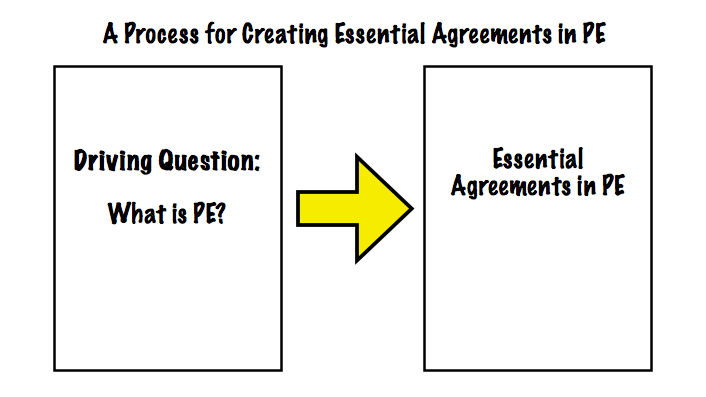
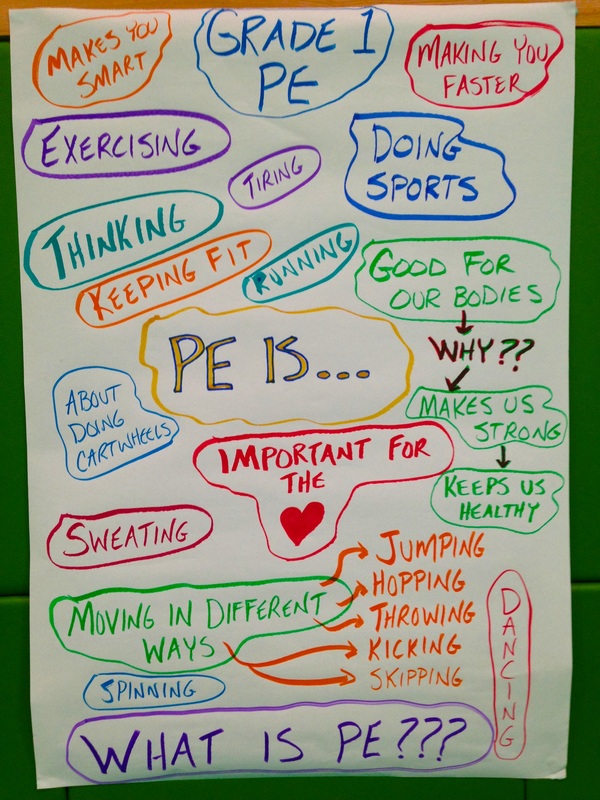
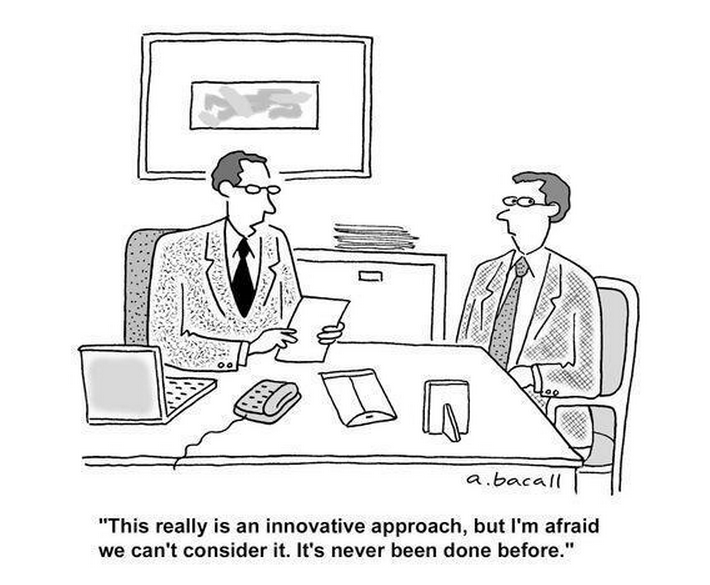
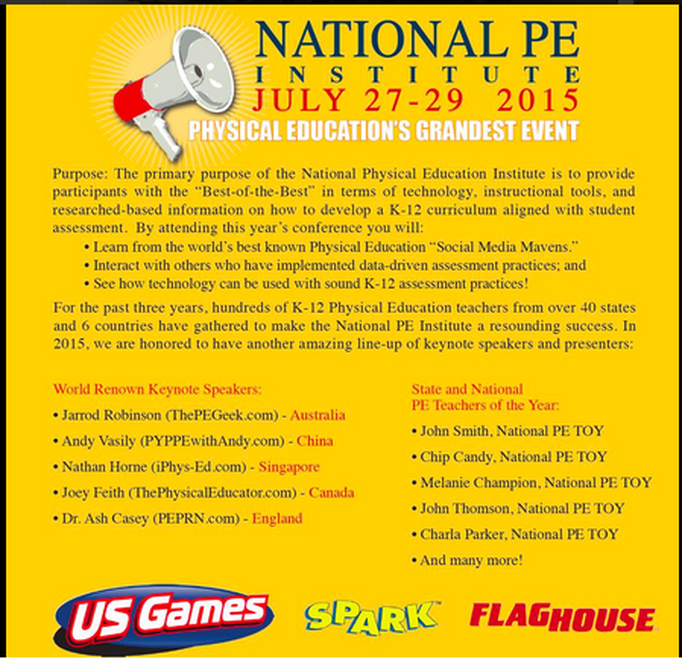
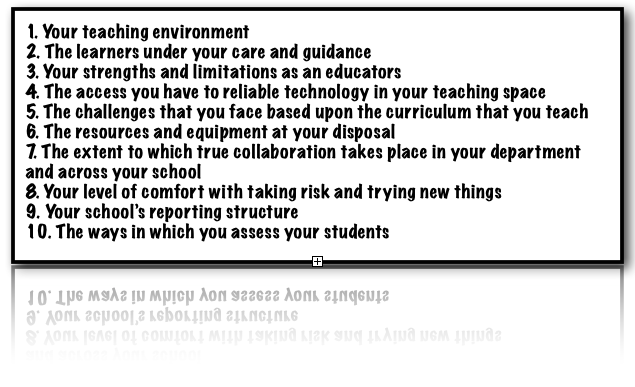


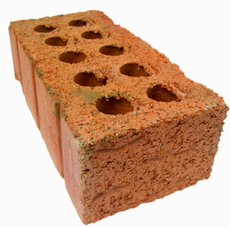
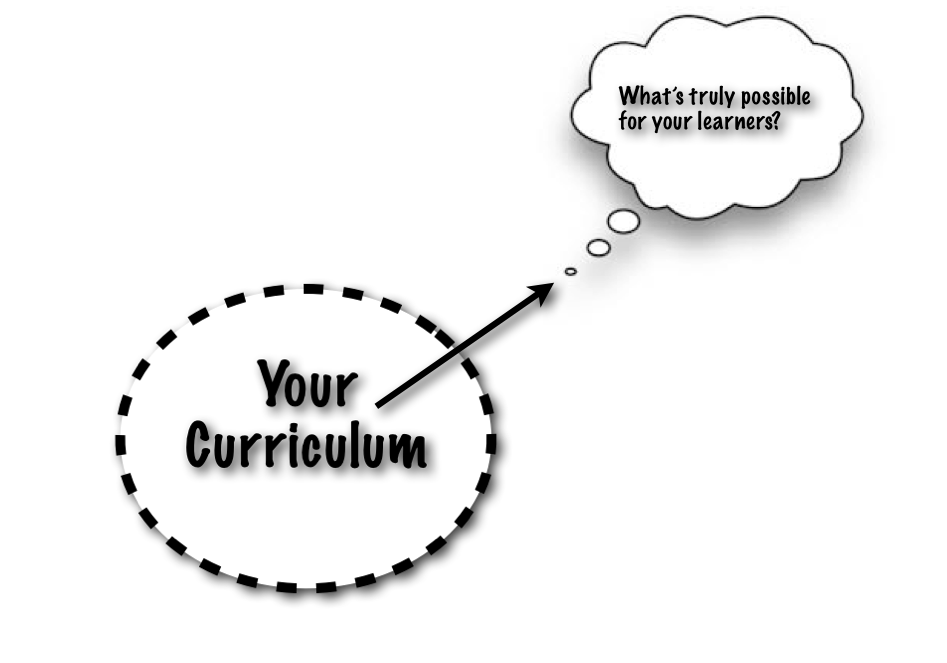
 RSS Feed
RSS Feed